
Author Archives: Administrator

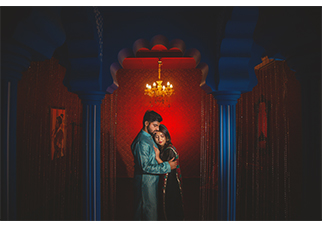
Tips to Sustain your Wedding Photography Business this Pandemic
It has been almost eight months since WHO announced Covid-19 as a pandemic. At the start of this, everyone was optimistic that it will recover very quickly but unfortunately that hasn’t been the case for many business sectors in India. Small and medium scale companies in the wedding industry have suffered immensely. With the functional scale of businesses descending drastically, business have been forced to take tough decisions.
The wedding industry, which is one of the leading services, has been the worst hit. Reports worldwide have classified this sector as ‘Highly Affected, High Financial Impact’. This leaves businesses and photographers with no option but to work on their business growth and findnew and innovative ways to fight the pandemic.
We, as a photography magazine, propose some points of business that wedding photographers need to adopt to sustain the ongoing Covid-19 crisis.
1. Know your Numbers
Experts need to realise their business in terms of pure numbers, especially during the pandemic where every rupee matters. You will need to be highly alert with your money, the cost of operating your company, the cost of earning a client and many other things. Your most important aim here should be to have a net positive in all terms. Photographers, especially working as freelancers, should keep a habit of keeping a note of their finances every month and planning their future steps accordingly.
A net positive is an indication of a firm business and ensures that the photographer is in control of their planning and expenses while still keeping the creative capability of the business alive.

2. Advertising should remain an EssentialPart of the Business
YES, you heard it right. Advertisement and a pandemic are not linked and one should not make the mistake of connecting the two. Henry Ford said, “Stopping advertising to save money is like stopping a watch to save time”.
As every photographer market their best images, promoting your best work that you have captured throughout the last season. Else, you will be out of business competition. Plan a budget for your advertising and marketing expenses based on your numbers, calculate a monthly expense and stick to it. Always keep in mind that the photography industry works on word of mouth advertising more than any other way. So now is a perfect time to reach out to your clients to present your offerings to them.

3. Good Management will take you Places
Avoid buying latest equipment if you don’t need it. Photographers are notorious for spending unnecessarily on latest gears and techs. It is all about the latest expensive mirrorless cameras, lenses and accessories; photographers always want to get their hands on new equipment as soon as it is launched. In scientific terms, this is known as Gear Acquiring Syndrome. Every professional has been there and done that and hence it is advisable to save yourself from such unnecessary acts especially during this critical time.
Always remember, you create the content, not your camera. Companies will keep coming with newer tech every sixmonths. But do you need to upgrade? The simple answer is NO, if it isn’t needed yet. This is the perfect time to create a standard operating procedure on buying new gears and make every purchase worth its cost.

4.Focus on your Service Offerings
With home weddings are safe at the moment, it is definitely not a tradition but more like a trend, at least until the Covid-19 is completely over. Matching your current service offerings with client needs is the key to continuing your business successfully. For example, in a small wedding, clients are not looking at a large team. So, will you work with someone who you can trust to deliver at least 50% of our results? Will you be able to deliver the work on the time? Are you ready to work on smaller budgets? Will you deliver the same value as you did for a bigger wedding?
These aspects need to be given an ambitious look. This means that you need to find some good ways to earn money during the pandemic to earn a good profit. Use your expertise to create new service offerings that are collective and can be used in other business sectors. Reach out to clients and other businesses and offer your new services. Cold calls and emails are something you should start now. Are these things out of your comfort zone? Now is the perfect time to get started!

5. Get ready for the New Normal
The pandemic will not stay forever. The situation will improve in coming months. However, that being said the economy is going to enter a ‘New Normal’ where everyone will be more observant about their expenses.
The last few months have given us a taste of what we actually require and what really matters. This mentality will have a pure impact on the wedding photography industry where the prize size for a wedding may drop, but the value that a client needs might remain the same. In such a situation, photographers need to plan how they can match client’s expectations and still earn profits. Planning in terms of team management, editing work, gears, etc, will help you to face the changed expectations with more ease.

Canon EOS R5 Review
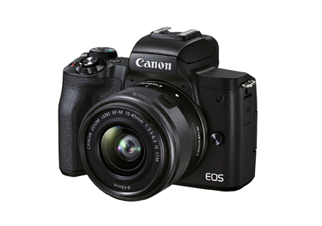
Canon launches the versatile Canon EOS M50 Mark II
Canon recently announced the launch of EOS M50 Mark II mirrorless camera, designed for photography enthusiasts who are also keen to do videos and live stream. Whether you are a parent looking to capture fleeting moments of your child’s milestones or a frequent traveler looking for a compact and fuss-free shooting experience or someone hoping to start your own YouTube channel then the EOS M50 Mark II is designed to help create captivating photos and videos with ease.
Commenting on the launch, Mr. Kazutada Kobayashi, President & CEO, Canon India said,“At Canon, it has been our consistent effort to bring the latest technologies to our customers that not only enhance their photography and videography experience but also allow them to innovate and experiment with the content they create. We are delighted to launch EOS M50 Mark II, the mirrorless camera that helps you master the art of both stills and video. The camera is packed with a wide range of features that are sure to augment your movie shooting experience manifolds.”
Commenting on the product, Mr. C Sukumaran, Director, Consumer System Products & Imaging Communication Productssaid, “Over the past few years, Vlogging has emerged as a new form of content creation and it is gaining popularity and becoming a new trend too. Keeping the same in mind, we have launched the multifaceted EOS M50 Mark II. It allows vloggers to live-stream directly to YouTube by connecting to Wi-Fi as well as enables users to create 4K quality videos seamlessly in various scenarios. The newly launched camera is a perfect successor to its predecessor EOS M50, which gained massive popularity and was widely accepted by the ‘Vlogger’ community. With multiple innovative, best-in-class features and a user-friendly interface, we are confident that the EOS M50 Mark II will be received well by the audience and will support them in creating engaging content and further fuel their passion.”
Capture Beautiful Portraits and Vivid Action Shots
The EOS M50 Mark II features an enhanced Eye Detection AF, which is able to detect and focus on a subject’s eye even when the person is far away. This will ensure the eye will always stay in focus, making it possible to use Eye Detection AF for full body shots in addition to the common upper body portrait shot. Users can capture subjects quickly and accurately when they are approaching from a distance, making it great for candid shots as well. Eye detection AF is also available with Servo AF when shooting still images and Movie Servo AF when shooting video, so you will always be able to capture your subject’s natural expressions even when they are in motion. The EOS M50 Mark II has a continuous shooting speed of up to 7.4fps with servo AF so users can capture multiple shots of moving subjects such as children or pets. Its built-in high-resolution electronic viewfinder (EVF) makes for easy viewing even when shooting in the bright outdoors. The AF frame display in EVF or LCD screen of the EOS M50 Mark II, which shows which part of the picture the camera is focusing on, has also been improved. It is now faster and tracks the subject more smoothly, so users will always know which part of the picture will be in focus without experiencing any on-screen lag. Display speed on the AF frame display in the viewfinder or LCD screen has also been improved on the EOS M50 Mark II, allowing for a better visualisation of the tracking. An EOS first, the EOS M50 Mark II makes full use of its touch-sensitive display with the new Tap AF feature where users can instantly switch focus from one person to another by just tapping on the screen, which is especially useful in group shots. This is in addition to the Touch & Drag AF, where users can move the AF frame by dragging their finger on the screen while shooting through the EVF
Enhanced Movie Shooting Experience
On the EOS M50 Mark II, Eye Detection AF works with Movie Servo AF shooting. By simply keeping the subject within the frame while shooting, it will track the subject smoothly. Users can thus focus on the composition of the video while leaving the tracking of the subject to the camera. With an improved contrast AF algorithm, users can also expect enhanced AF stability during 4K movies shooting with EF-M lenses. This will enable smooth movie recording, with reduced wobbling. EOS M50 Mark II supports movie digital zoom (approx. 3-10x) at the central part of the screen during shooting, which can be combined with optical zoom on a zoom lens to achieve magnified shooting with up-close shots.With existing cameras, movies shot vertically are displayed smaller in a horizontal position when users play back the movie on a smart device. On the EOS M50 Mark II, an “add rotate info” option enables automatic vertical playback on smart devices, PCs and compatible social media, which enables a better viewing experience. For video bloggers, they could even live-stream directly to YouTube directly from EOS M50 Mark II by connecting to Wi-Fi without using a streaming unit. The EOS M50 Mark II also supports the Canon’s new image.canon cloud platform and registered users of the platform can upload, store, download and transfer images smoothly between various devices. Equipped with a Vari-angle LCD monitor and features such as touch screen recording, movie self-timer and an external microphone jack, the EOS M50 Mark II makes intuitive and easy for Vloggers to record videos and do live streaming.
The sales for the newly launched EOS M50 Mark II will be starting from December and it will be priced at an MRP of Rs. 58 995.00/U (inclusive of all taxes).
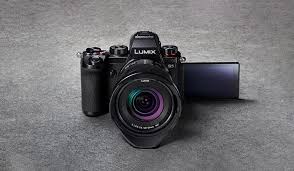
Panasonic S5 now available in India
Taking forward the legacy of the full-frame mirrorless Lumix S Series, Panasonic launched its Lumix S5 model in India today. The S5 is priced at Rs. 1,64,900 for body only and Rs. 1,89,900 with kit and is available at stores across India.
A hybrid camera that according to the manufacturer has been made for creators – people passionate about creating content as well as professional photographers uses the L-Mount albeit one key difference. Panasonic has taken extra care to ensure that the camera is really compact in terms of its body size. The S5 features a 24-megapixel full-frame sensor and also offers in-built 5-axis image stabilization, which can decrease shake upto 6.5 stops with compatible lenses.
Although compact, the photo and video quality offered by the camera is similar to that of the previous models in the S series – S1 and S1H. The S5 uses the same 24-megapixel sensor used in S1 and the Dual Native ISO of S1H, which helps its deliver good low-light sensitivity and a wide dynamic range in various lighting conditions
.
Stay tuned for a review of the camera on our website and magazine. The full list of basic specs are below:
Specifications:
|
Body Type |
Digital Single Lense Mirrorless Camera |
|
Lens Mount |
L-Mount |
|
Recording Media |
SD Memory Card / SDHC Memory Card / SDXC Memory Card |
|
Image Sensor Type |
35 mm Full-Frame CMOS Sensor |
|
Effective Pixels |
24.2 megapixels |
|
Max Resolution |
6000 X 4000 |
|
Video Resolution |
2160p, 1080p |
|
ISO |
100-51200 |
|
Display Size |
3” |
|
Display Resolution (No. of Dots) |
2,360,000 |
|
Weight (including batteries) |
714 g |
|
Connectivity |
Wi-Fi, USB, HDMI |
|
Shutter Speed |
Minimum Shutter Speed – 60 sec Maximum Shutter Speed: Still Image: 1/8,000 Motion Picture: 1/16,000 |
|
Autofocus |
Auto Detection (Face, Eye, Body, Animal) / Tracking / 225-Area / Zone (Vertical/Horizontal) / Zone (Square) / Zone (Oval) / 1-Area+ / 1-Area / Pinpoint / Custom 1, 2, 3 |
|
Manual Focus |
Available |
|
In-Camera Editing |
Picture, Resizing, Cropping, RAW Data Edit
|
|
Battery |
Li-on, Rechargeable Battery with 7.2mAh capacity |

‘Our Cameras don’t have the Capability of our Eyes’ – Varun Aditya
Varun Aditya’s journey is one of dedication and perseverance. A journey that found his calling in photography and a passion that derived from nature. In this interview he takes us through that journey and more: Excerpts
How did photography happen? And how did you go about pursuing this dream?
I was doing my post-graduation in London and being an introvert, I always wanted to travel to open up. Aided by the fact that my parents were also travellers, that and the Western Ghats close to the Coimbatore where I resided influenced me a lot. I bought my first camera at the end of 2010 and shot London and posted that on social media platforms of those days. I started getting appreciation and that motivated me a lot.

Once while clicking an aircraft I accidentally clicked a bird in flight and got fascinated with the image. I tried recreating it, but realised that it wasn’t easy and that you have to follow their pattern. The more I started following nature, I started falling in love with it. That is how nature and wildlife started. In 2013, I started doing safaris, my first safari was in Bandipur, Karnataka and that is where I saw my first tiger, leopards and spotted deer’s and all these beautiful animals made me fell in love with nature. And that’s when I realised that this is my passion.
What inspires you about wildlife photography?
Nature, light and the animals. In my journey to understanding nature and photography, somewhere in between I fell in love with light, especially after my first safari in Bandipur. I play a lot with light and that is what inspires me when it comes to animals as well. And the more time I spent in nature with animals, I really started liking them a lot. As the saying goes ‘animals are better than humans’, I genuinely feel that they are more responsible than us. They do a lot more than human beings and I have really learnt from animals.
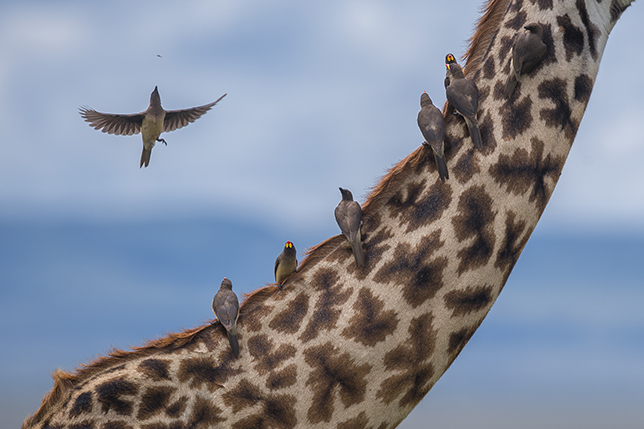
What are the practical difficulties that a photographer faces while shooting wildlife?
The practical difficulty that we face are unlike the other genre, except street photography. Wildlife and street photography are similar, nothing’s going to pose for you. Wildlife photography gets even trickier because the practical difficulty we face is that we got to be lucky, you really can’t create the scene. You have to wait for the scene, decide and be active with your presence of mind.
You get less than 60 seconds to shoot a cat in the Indian jungles since they are thick. Which means you have to be there at the right time, the right moment, right weather, right light and the right background. If these factors don’t align, then it is something that you have to master, which I am also in the process of doing. But in this pandemic, I have learnt that when you limit yourself with what you have then you can sharpen your creative skills. I worked on that during this lockdown and realised the difference it made when I did my first safari post the lockdown in Bandipur.
What level of research is needed before going out on the field? Is it important to know a lot about animal behaviour to get the perfect shot?
There is a lot of research that we do, but my secret is that I usually prefer to go to places in the off season. For instance, when I wanted to go Masai Mara, I went in the off season and got the idea about what I had to do for the next 10 trips. It is also advisable to go as per the weather conditions, I choose a place according to the weather, like if it is the best to go to Masai Mara is between August or September then I prefer going in November when no one would show up because of the rain. But now with global warming things are becoming unpredictable in terms of the weather as well.
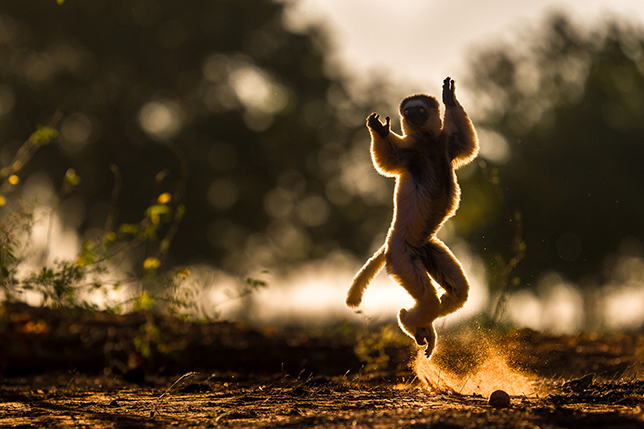
Animal behaviour is important and I have learnt a lot from my mistakes over time. For instance, I would photograph lions during the day in Masai Marawhen they would only sleep. Since they sleep for over 18 hours during the daytime, they are awake in the night, which is the best time to photograph them. Similarly, capturing a cheetahwhile hunting. It is important to know that a cheetahalong with their cubs hunt a lot more, so tracking when was their last meal. This helps in being at the right place at the right time.
Another example closer to home when we track tigers and leopardsthen they always choose the same path most of the time. Or birds, they always visit a place at the same time, especially when they are feeding. These are the animal behaviours that we learn eventually from our experience which is very fascinating to learn.
How can you as a photographer help protect wildlife and conservation?
As a photographer, there are two ways that you can help in conservation. You can ask your followers to visit safaris since half of that price goes to conversation. You can also spread positivity with your pictures as a photographer. Another way to contribute is to donate to wildlife societies that work on wildlife conversation. As a wildlife photographer we can influence viewers with our pictures and I am proud to be such an influencer, since it really works.
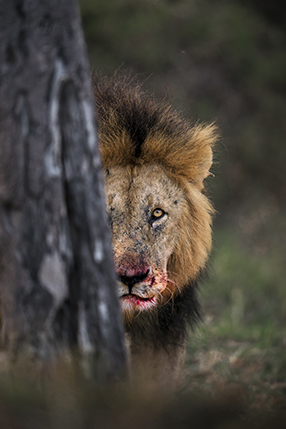
Are there any species/animals that you will happily photograph again and again?
I am not a species driven person, to me an elephant or a pen or my mom is all the same. I try my best to capture that frame and convey a story. For me it is all about composition. But having said that, any monkey family gives you a lot of photography opportunity and that’s what I love about monkeys. Because whenever I find them they are always active, they do something or the other and support my frames. So yeah if I want to photograph any animal/species that will be any monkey.
Your image for Nat Geo’s Nature Photographer of the Year for animal portrait is incredible. How did you get that?
It was with my friend Arvind Ramamurthy who decided to go there. A place called Amboli, and it comes alive when it rains with a lot of frogs, snakes, etc. We went there to photograph the Malabar Gliding Frog and that was the first day out in the woods, we went there for three nights. We started photographing frogs and my friend spotted a Green Vine Snake, it was just 15-16 cm, very small.
The environment was beautiful and I decided to change to a wide lens from a macro lens. Others were reluctant since it was raining, but I don’t really care about the gear, I care more about the picture. So I shifted from macro lens to wide angle 16-35mm f/4 lens and I started photographing. It was really challenging as the picture was getting fogged up a lot because it was raining again and again, I had to clean the lens front element and click every time. The picture was foggy so I had to use the dehaze in the post-processing a lot which I don’t usually do. Thanks to the snake it stayed there posing for about 15 minutes.
It was a beautiful learning experience for me because that particular picture of Green Vine Snake, I named it ‘Dragging you deep into the woods’. I loved the image and the composition really conveyed the story I wanted.

Post-Processing of images has now become a common trend. Do you advise its use?
Post-processing actually depends on the image, I sit on an image for 5 minutes to an hour depending on what the image or the scene demands. I usually look for backgrounds and if I find the subject first then I follow two main rules, avoid what is distracting and include what is good. And the same thing in post-processing avoid what is distracting and enhance what is good, so it is an art of enhancing. It is really important to embrace the trend.
It was really tough for me to start learning post processing, but it is such a beautiful thing and altogether a different art of enhancing images. Our cameras do not have a capability of our eyes, our eyes have HDR, it can balance highlights and shadows and our cameras can’t do that. I don’t like cloning, removing or adding a subject. That is called digital manipulation and it works for people who like it. That is a different art. My peace comes in when I do what I love. For me it is the basic post-processing which includes highlights, shadows, whites, blacks, a bit of vibrance, I use a lot of brush as well and just the fundamentals. I would recommend people to use it, it is a good thing.
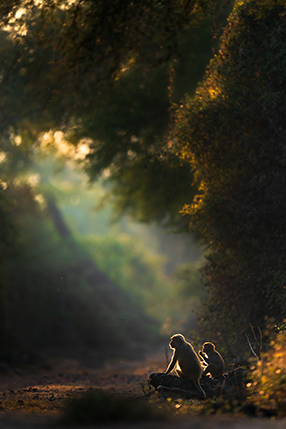
What advice would you give to young photographers who are just starting out and considering pursuing a career in wildlife photography?
My advice would be that passion will find you, don’t go searching for it. Be alive, keep thinking about what you are good at and keep trying new stuff, be adventurous. You never know what knocks your door and that can be your calling. The advice I would like to give being a wildlife photographer, to make a living out of wildlife photography is really tough. I spent six years jobless, a good portfolio on Instagram and Facebook and my website and I have one or two books as well. It took time and also it took two awards for me to get the confidence to do it professionally.
There are two ways to earn professionally in this genre. One is to teach and other is to collaborate with brands. I started teaching in 2016 by way of workshops and photography tours. And now with the number of followers that we have we approach brands that pay us.
It took me six years and it can be less for you with the world growing, be good at your work and try to be unique that’s the main thing I would say.
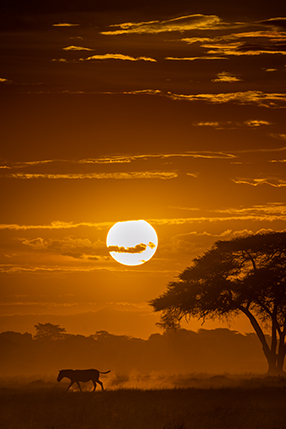
What are your favourite places to shoot and if you could recommend some places for our readers to shoot at?
I choose places depending on the weather, so the bunch of places that I can recommend if people are from North then I will suggest Jim Corbett in the end of April, May and June for the elephants and Kaziranga at the end of March or April when it starts to rain. I recommend Kabini for the beautiful trees and leopards and lot of cats. I recommend Kanha for the jungle since it is beautiful.
If you are looking for a National Park then it is Bandipur, Kabini as all the South India national parks are open throughout the year. I recommend Ranthambore for a lot of tigers in unique habitat, but I still to visit Ranthambore not in summer but in monsoon and winter season if you want some great photographs, starting from November to January the park is closed, sometimes they open the Zone no. 6 and 10 and maybe Zone no. 7 as well.
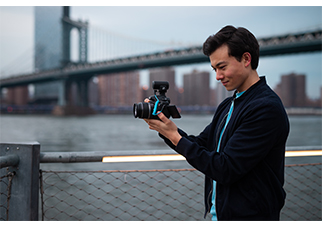
SENNHEISER MKE 200 MIC Review
Sennheiser recently launched the Sennheiser MKE 200, a budget friendly mic for content creators and upcoming youtubers that have entered the world of video. In this article we have reviewed the latest and affordable microphone from the MKE lineup by Sennheiser, which works with both your cameras and smart devices.
To see the Video Review on our YouTube channel click: https://youtu.be/mlJNTiC9H88
Design:
In terms of design, the mic is really compact, stylish and minimalistic. It can actually fit inside your palm and Sennheiser has done a good job when it comes to understanding what the customer needs and its product placement. It really is an idiot proof mic that works as a plug and play design. You just mount it on the camera or smartphone and its ready to use.
Although it uses plastic, the MKE 200 is well built and features only a 3.5mm jack in the front and nothing else. It doesn’t even need batteries and draws the power from your camera or smartphone using the same cable. But a light indicator would’ve been good to show if the mic was on and working.
A Directional Mic
The MKE 200 is the most budget friendly direction mic in the MKE line-up. A directional mic records the sound from the front and a minor sound from the sides. The sounds from back are slightly softer. The built-in mics of the cameras that we use are omnidirectional which means they record the sound from all directions. And this is also the case with some of the more expensive mics that you use.
The microphone comes with a clever internal shock-mount which acoustically decouples the capsule from the housing. To reduce the wind noise, Sennheiser has designed the MKE 200 with an integrated layer of protective mesh inside the housing. This protection is further enhanced by using the included dead cat cover that comes in the box.
Performance:
Sound recorded from the front:
In terms of sound quality the mic does a good job of recording the sound. It captures the sound coming its way clearly and like any other outdoor scenario it will capture ambient noise as well. But if you are using an external microphone then we assume that you will post-process your sound to eliminate other sound.
Sound recorded from front (5 ft):
In order to check the throw of the mic we tested it from a distance of 5 feet to check its performance. The sound was decent and again it did record ambient sound.
Wind cancellation:
We also recorded the sound in a windy situation with and without the dead cat cover, which is included in the box. The deadcat also does a good job of reducing the wind and high pitch noises.
Sides and Back:
We recorded the sound from sides and backs and the sound is much softer from the sides and is almost negligible when using it from the back.
Conclusion:
For a Rs. 8,490 mic the Sennheiser MKE 200 performs well across all the tests. Sennheiser has really understood the needs of someone who is beginning to shoot videos. The mic is really compact, small and idiot proof that does the task well. So, if you are starting out in shooting videos or vlogging and looking for an budget friendly mic, then the Sennheiser MKE 200 is surely the mic you are looking for.
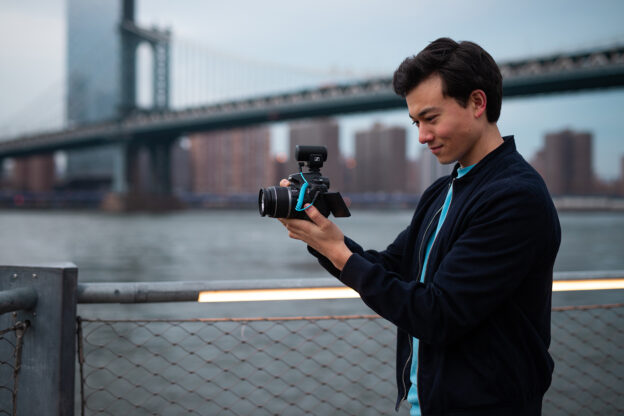
Sennheiser introduces MKE 200 Directional Mic in India and Review
Sennheiser has introduced its new MKE 200 directional mic in India as part of its portfolio for audio-for-video microphones. The mini-microphone is designed for easy on-camera use with DSLRs and mirrorless cameras as well as mobile devices.
The MKE 200 will be made available exclusively at Amazon.com from 28 September 2020 at a price tag for Rs. 8,490. The MKE 200 is the budget offering for amateurs and newbies that are looking to shoot and record video content using their cameras and smartdevices.
“We are thrilled to launch of Sennheiser MKE 200 on camera microphone in India. Over the past few years, we have witnessed a significant rise of content creators in India. Due to this, Audio for Video segment has seen a growing demand for wireless audio devices. Capturing high quality sound is imperative to garner subscribers and followers,” said Vipin Pungalia, Director, Professional Segment, Sennheiser India.
The MKE 200 features a directional design that captures the sound of your subject. The microphone is fitted with an clever internal shock-mount which acoustically decouples the capsule from the housing. To protect from wind noise, Sennheiser has designed the MKE 200 with an integrated layer of protective mesh inside the housing. This protection is further enhanced by using the included furry windshield when filming outdoors.
Visit our YouTube channel for full review

Fujifilm launches Instax SQUARE SQ1
Fujifilm launched the instax SQUARE SQ1 Instant camera today, which is its new addition is an analog, square camera and creates square format instant prints at 1.5 times the size of its instax mini counterparts. One of the key features of the new addition to this Instax range is its automatic exposure. This function automatically senses the level of ambient light when the shutter button is pressed, and optimizes the shutter speed and flash output according to lighting conditions.
Apart from the camera the brand has also introduced two new instant film varieties; the Square Rainbow film and the Square Monochrome film. The SQUARE SQ1 will be available in three colours Terracotta Orange, Glacier Blue and Chalk White with bookings available from 24th September on Amazon and Flipkart, at an MRP of 10,999.
 16.jpg)
Instax Square Rainbow Film
 17.jpg)
Instax Square Monochrome Film
Masaki Zenko, Head of Instax division and Senior manager of Photo Imaging division, Fujifilm India said, “The instax SQUARE SQ1 will fit right in with our creative, expressive user base and allow them to create compelling new instant prints.”
The camera is a perfect amalgamation of the olden days nostalgia with respect to its films and the new age sleek design,” added Kunal Girotra, National Business Manager Instax Division, Fujifilm India.

Sony announces lightest full-frame mirrorless camera A7C for $1,799
 13.jpg)
Pic: Sony A7C
If you are a fan of the Alpha series cameras and compact light bodies then there is some exciting news that come from Sony. They just announced that the A7C model, which is expected to be the smallest and lightest Alpha range camera built yet.
In terms of look the A7C looks similar to their APS-C line up of cameras and it will be interesting to see how they’ve managed to fit a full-frame sensor into that tiny body. The camera measures 124.0mm x 71.1mm x 59.7mm and weighs 509g.
It features a 24.2-megapixel full-frame sensor with in-body image stabilization and a standard ISO range of up to 51,200. The camera is capable of shooting up to 10fps with autoexposure can also shoot 4k videos at 30 fps and 1080p/120fps video. It will be interesting to see if there will be any limitations on the recording time or if the camera heats up while shooting 4k. The body has USB-C, Wi-Fi, and a vari-angle 3-inch 921,000-dot LCD. The Alpha 7C also supports 16-bit processing and 14-bit RAW output for natural gradations.
Apart from the camera Sony has also developed a new kit lens to pair with the A7C. It’s a 28-60mm f4-5.6 zoom that’s just 45mm long when retracted. The price of the body only is at $1,799 and the price for India might be announced soon. The camera is almost $200 lesser than the A7 III.

 1.jpg)